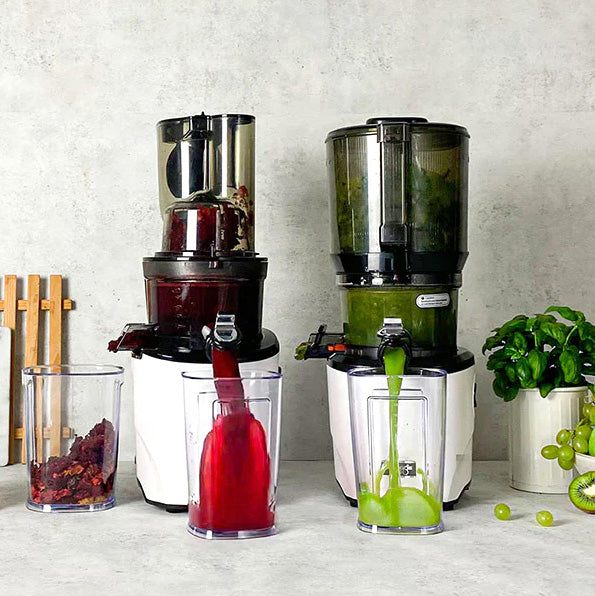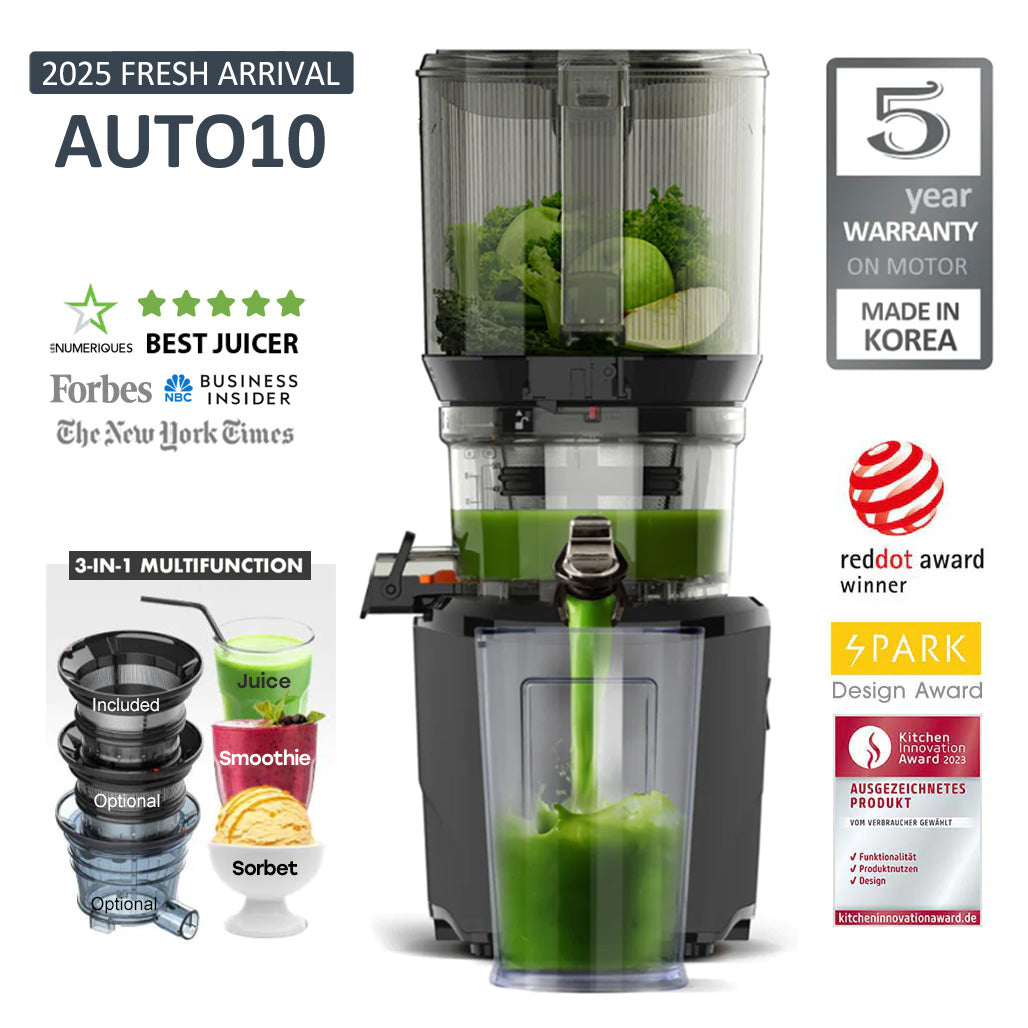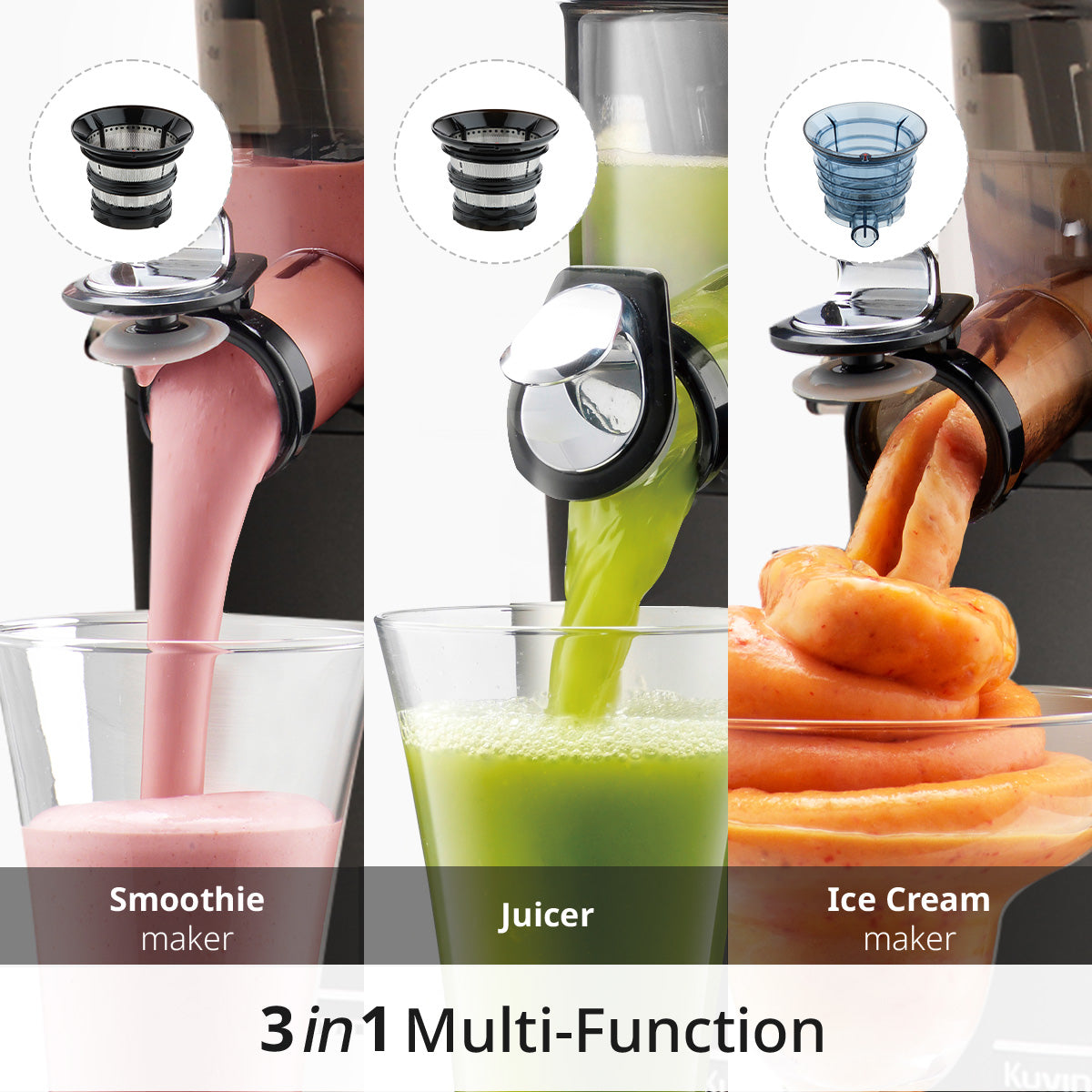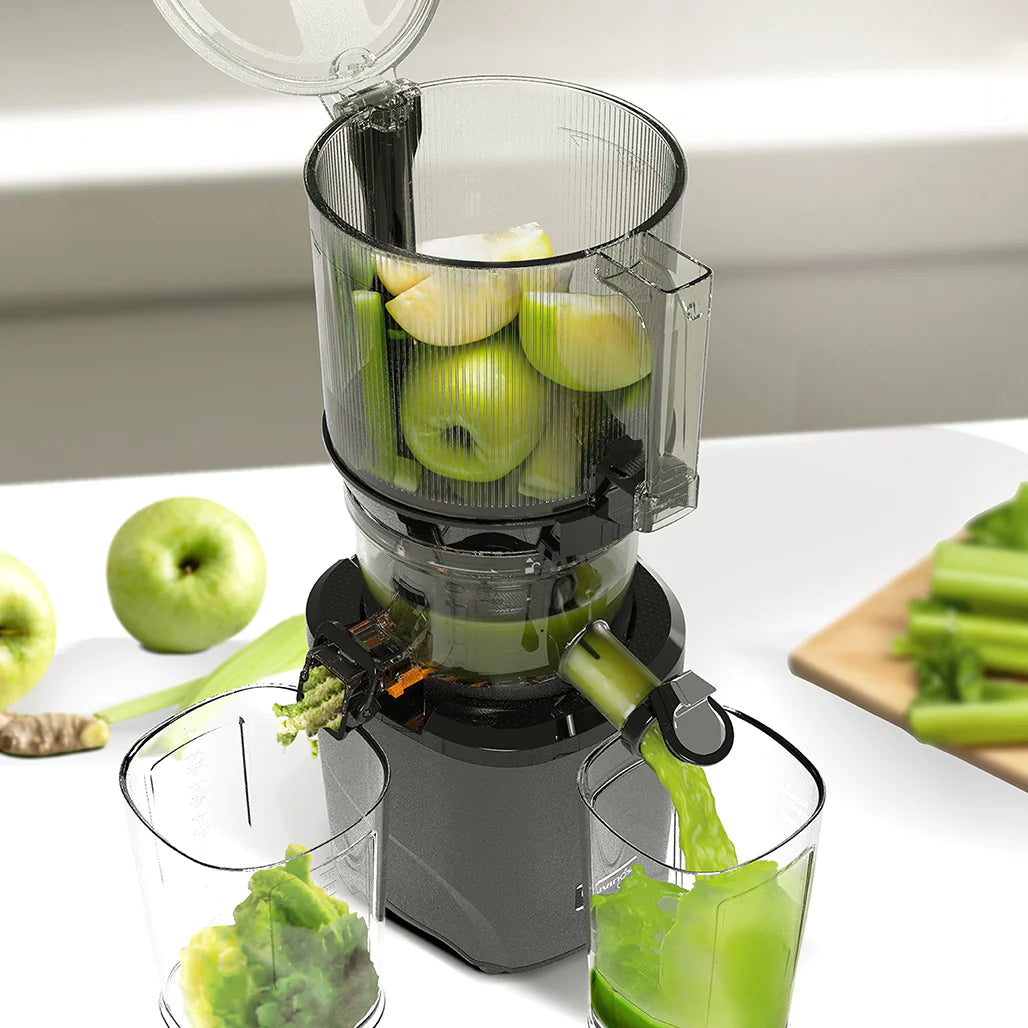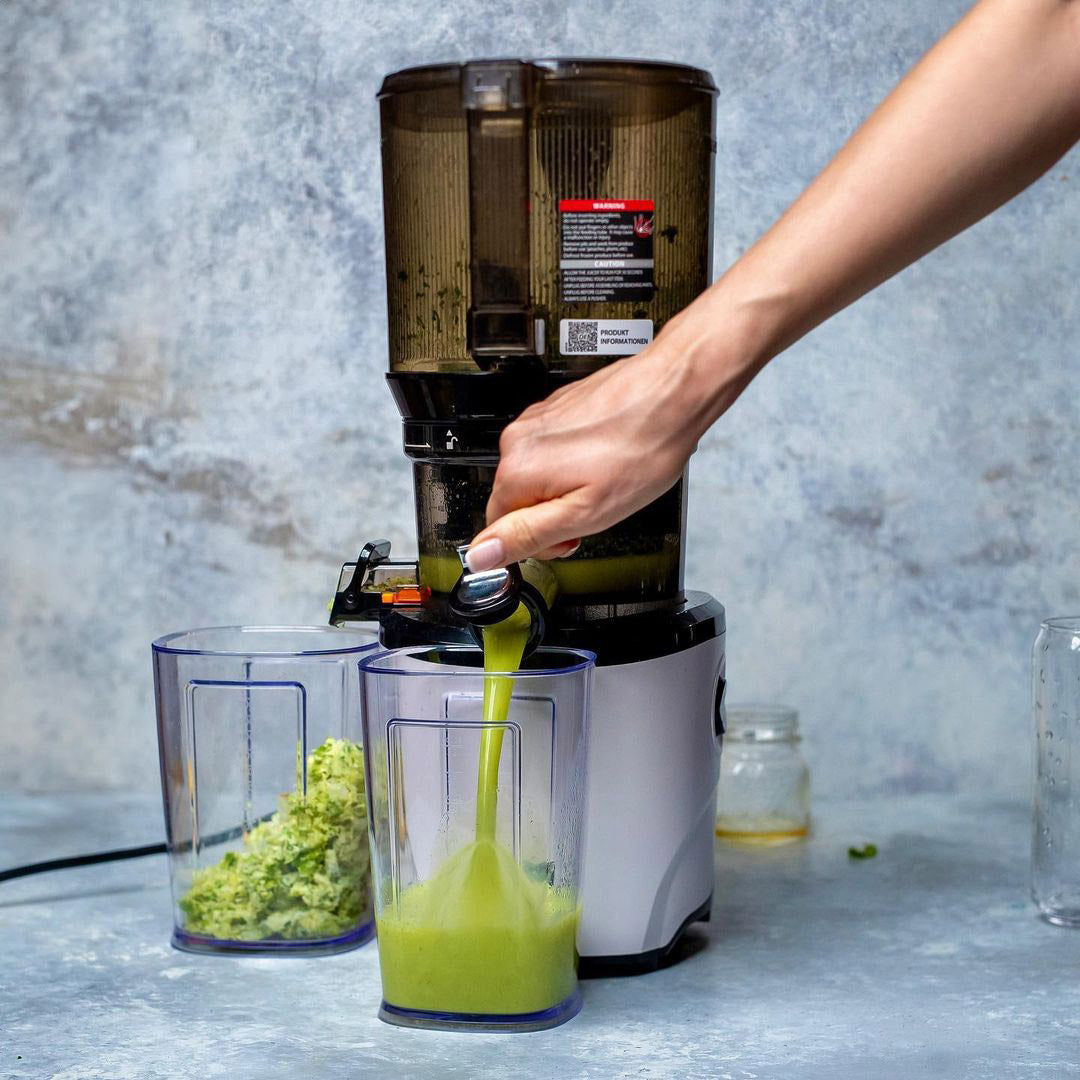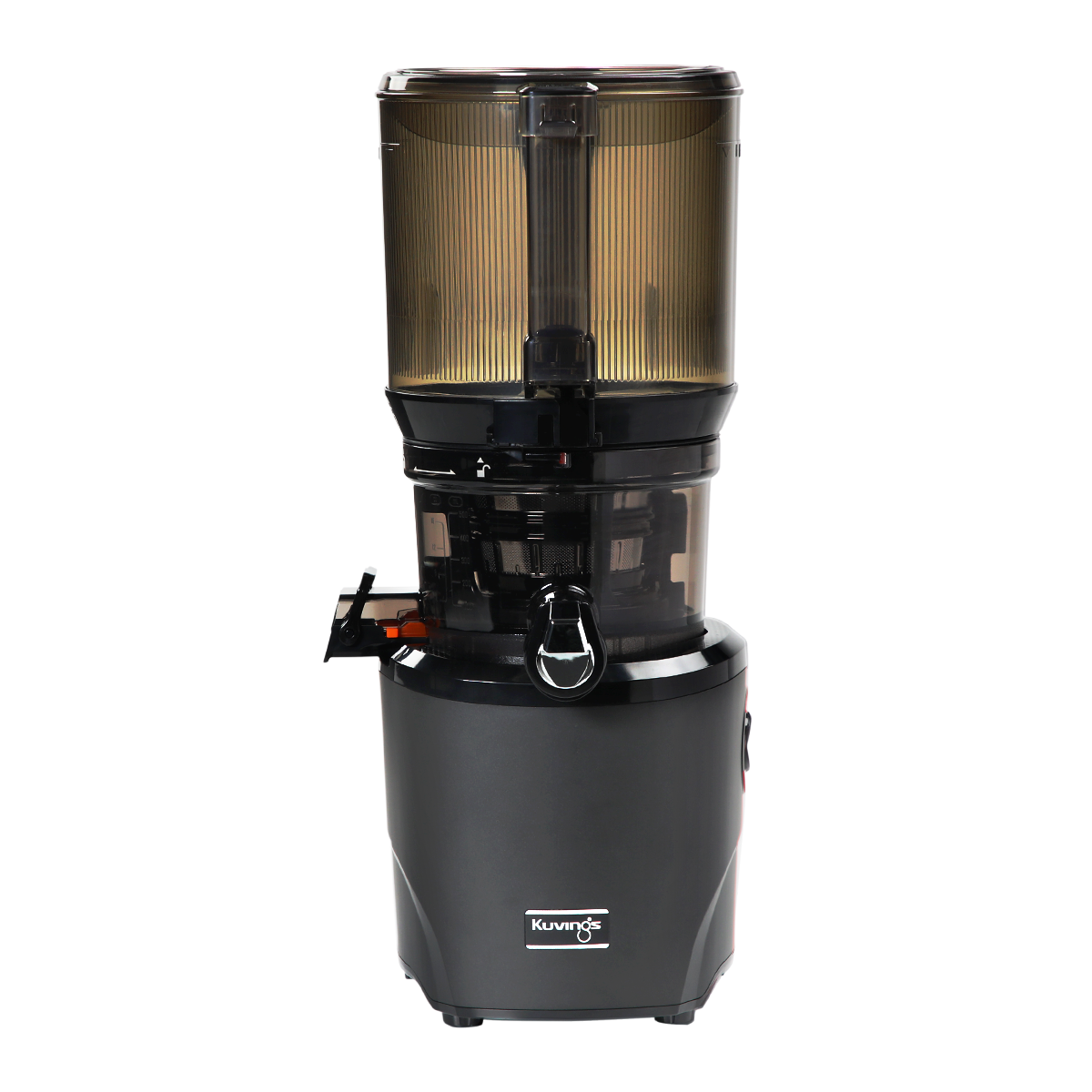Celery is not the easiest ingredient to juice thanks to its long, stringy fibers. In this article, we’ll provide our tips and tricks for getting the perfect glass every time.
CELERY JUICING TIPS

1. COLD AND FRESH IS BEST
One of our best tips is to make sure you're juicing fresh celery, and that you keep your celery refrigerated until just before juicing.
Why? Because fresh, chilled celery is usually firmer, and will get snapped and crushed easily by the auger. Old, room-temperature celery is more bendable and rubbery, which makes it more difficult to juice.
2. SOAK THE STALKS
This step is optional, but it can help revive celery that’s been in the fridge for a while. After you wash your celery, soak it in cold water for 30 minutes to rehydrate its dried-out fibers.
3. TO CUT OR NOT TO CUT?
We don't usually cut celery when we juice in our test kitchen. But when others have trouble with celery, we often advise them to cut their celery into smaller pieces.
Cutting celery into 1-4 inch pieces breaks up their long fibers, which can otherwise wrap around the auger and cause a backup.
Try cutting your celery into small pieces at first, then work your way up to whole stalks as you get more comfortable. Some people prefer to cut their celery, no matter how long they've been juicing. It really comes down to preference.
4. JUICE SLOW AND STEADY
Because of the juicer’s wide mouth, it’s tempting to throw in handfuls of celery one after the other. Instead, watch the auger pull the celery down into the juicer before inserting more. This will improve your yield and make the juicing process a lot smoother.
5. PUT IT IN REVERSE
If celery pieces accumulate inside the juicer, use the reverse button to dislodge and reprocess pieces.
IS MY JUICER CLOGGING?
Most of the time, what is considered clogging is actually normal for a vertical slow juicer. If both pulp and juice are exiting the machine, your juicer is most likely functioning normally.
1. PULP TAKES SIDES
Sometimes pulp exits one side of the pulp spout, while the other side of the spout is filled with pulp that’s not moving.
This is because the pulp spout is wider than the opening on the bottom of the strainer, where pulp exits the juicer. For that reason, it’s totally normal to see movement on only one side of the spout.
2. PULP STICKS AROUND
Finding pulp in the strainer, on the auger, inside the auger cavity, and in the pulp spout is completely normal. Don't worry, you still got the most juice from your ingredients.
Centrifugal juicers use centrifugal force to propel pulp out of the juicer, while vertical slow juicers (like our Whole Slow Juicers) push out the pulp more gently. Therefore, some pulp inevitably lingers on the parts. Our juicers are designed to accommodate this.
To make cleanup a little easier, run some fresh water through the juicer before disassembling to flush out more pulp.
3. PULP PATHWAY
When you disassemble your juicer, you'll probably see pulp filled from the juicing bowl opening to the pulp spout.
That “pathway” is how the pulp travels through and out the juicer. The only thing that’s going to push out that section of pulp is additional outgoing pulp, but then more pulp will take up that space.
So, once you turn off and disassemble the juicer, you will always see that area filled up with pulp. It's not clogged, you just caught the pulp in action!
WHAT DO I DO WITH CELERY JUICE PULP?
You can freeze the pulp until you're ready to try a tasty pulp recipe.



